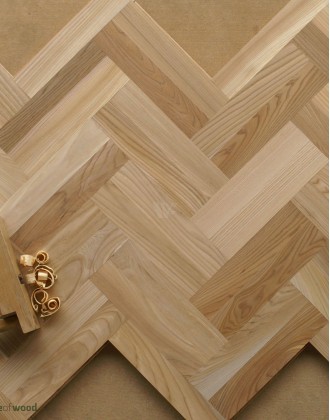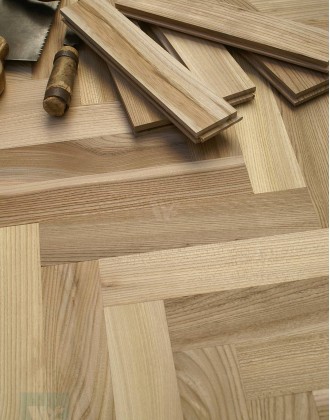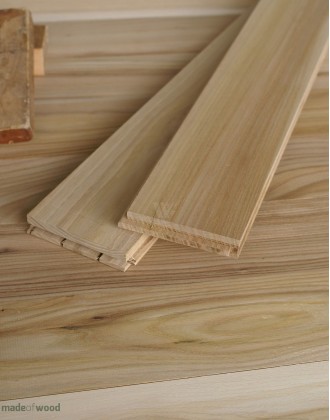Elm
European elm (Ulmus glabra) is a hardwood species that is native to Europe and parts of Asia. It is known for its strength, durability, and attractive grain patterns, and is widely used in furniture making, cabinetry, flooring, and decorative applications. Here are some characteristics of European elm wood:
Color: The heartwood of European elm is light to medium brown in color, often with darker streaks or bands. The sapwood is usually lighter in color and may be yellow or white.
Grain: European elm has a distinctive interlocking grain, with a medium to coarse texture. The wood may have a wavy or curly figure, which is highly prized for its aesthetic value.
Density: European elm is a medium-density hardwood, with an average density of about 42 pounds per cubic foot (670 kg/m3). This density makes it strong and durable, but also relatively lightweight compared to other hardwoods.
Durability: European elm is moderately durable, with good resistance to decay and insect attack. It is also relatively resistant to splitting and bending, making it a popular choice for tool handles and other applications that require strength and flexibility.
Workability: European elm is easy to work with, with good machining and finishing properties. It sands and finishes well, and takes stains and finishes evenly.
Uses: European elm is used for a wide range of applications, including furniture making, cabinetry, flooring, veneer, and decorative items such as paneling and moldings. Its attractive grain patterns and strength make it a popular choice for high-end furniture and architectural millwork.
Overall, European elm is a versatile and attractive wood species that offers a unique interlocking grain pattern, strength, and durability. Its moderate density and good workability make it easy to work with, and its distinctive figure and color make it a sought-after wood species for high-end applications.

European elm (Ulmus glabra) is a hardwood species that is native to Europe and parts of Asia. It is known for its strength, durability, and attractive grain patterns, and is widely used in furniture making, cabinetry, flooring, and decorative applications. Here are some characteristics of European elm wood:
Color: The heartwood of European elm is light to medium brown in color, often with darker streaks or bands. The sapwood is usually lighter in color and may be yellow or white.
Grain: European elm has a distinctive interlocking grain, with a medium to coarse texture. The wood may have a wavy or curly figure, which is highly prized for its aesthetic value.
Density: European elm is a medium-density hardwood, with an average density of about 42 pounds per cubic foot (670 kg/m3). This density makes it strong and durable, but also relatively lightweight compared to other hardwoods.
Durability: European elm is moderately durable, with good resistance to decay and insect attack. It is also relatively resistant to splitting and bending, making it a popular choice for tool handles and other applications that require strength and flexibility.
Workability: European elm is easy to work with, with good machining and finishing properties. It sands and finishes well, and takes stains and finishes evenly.
Uses: European elm is used for a wide range of applications, including furniture making, cabinetry, flooring, veneer, and decorative items such as paneling and moldings. Its attractive grain patterns and strength make it a popular choice for high-end furniture and architectural millwork.
Overall, European elm is a versatile and attractive wood species that offers a unique interlocking grain pattern, strength, and durability. Its moderate density and good workability make it easy to work with, and its distinctive figure and color make it a sought-after wood species for high-end applications.
12" Elm Herringbone Select HD14
300x60x19 Exclusive Grade
Superior Grade Solid Elm herringbone parquet with a unique grain pattern and very natural look. Beautiful when finished with flooring oil. Perfectly ..
£60.00/sqm Ex Tax: £50.00
12" Elm Herringbone Prime HD14N
300x60x19 Vibrant Look
Pure natural Elm wood parquet flooring. Stunning lively grain colour and pattern . Supplied in block size pieces for herringbone pattern. Superbly mad..
£56.40/sqm Ex Tax: £47.00
3 ¾" Natural Elm Flooring DD27
95mm Wide Rare Species Floor
100% pure wood strip flooring. Nice narrow planks to connect with the tongue and groove. Unfinished surface of this Elm wood grain looks best when sea..
£75.60/sqm Ex Tax: £63.00




